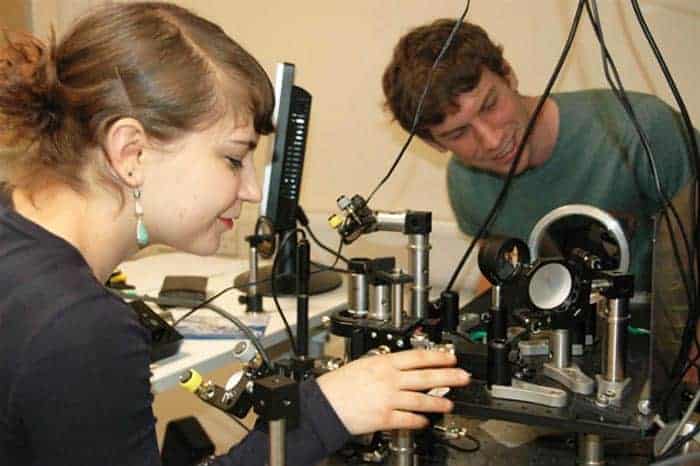
Under the right conditions, the transport of electrical charges through wires with nanometre-scale thicknesses could become more efficient as disorder in the nanowire increases. This counterintuitive behaviour could be possible following a theoretical discovery made by physicists in Italy and Mexico. Nahum Chávez at the Meritorious Autonomous University of Puebla and colleagues hope that this “disorder-enhanced transport” effect could soon be observed experimentally.
When electrical wires are shrunk down to just several nanometres in width they behave essentially as 1D conductors with properties that are heavily influenced by quantum mechanics. Such nanowires are increasingly being used in nanoelectronics applications and designers must contend with negative aspects of their quantum behaviour. For example, conductivity within quantum wires is suppressed exponentially as the level of atomic disorder in the wire increases. This phenomenon is called Anderson localization and is associated with interference effects that arise from the scattering of electrons from defects.
Physicists are keen on finding ways to avoid this suppression of conductivity, and one possibility is to explore systems in which long-range interactions between electrons could allow a charge carrier to move between all lattice sites in the nanowire – rather than just hopping to its nearest neighbour site as is the case in the Anderson localization model. A long-range interaction, for example, is responsible for superconductivity whereby charge carriers in the ground state of a material can flow freely.
Hop to it
In their calculations, Chávez and colleagues added an interaction to the Anderson localization model that allows carriers to hop between any two lattice sites in a 1D lattice. Specifically, their model describes a chain of molecules that is coupled to an optical cavity. This resulted in mixed quantum states that have characteristics that are both localized and delocalized – and therefore both suppress and support carrier transport.

Signs of Anderson localization spotted in 3D optical material
As disorder is introduced into the system, transport is first suppressed as expected from Anderson localization. However, as more disorder is added there is more mixing of localized and delocalized states and this causes transport to sharply increase in what the team calls a disorder-enhanced transport (DET) regime. As even more disorder is added to the system, transport remains constant over several orders of magnitude of increasing disorder in what the team call the “disorder-independent transport” (DIT) regime. Finally, after disorder reaches the next threshold, transport drops steeply once again.
The predictions of Chávez and colleagues could be tested in several different experiments where long-range hopping can be implemented – such as ultracold atoms trapped in optical lattices and Bose-Einstein condensates.
The research is described in Physical Review Letters.
